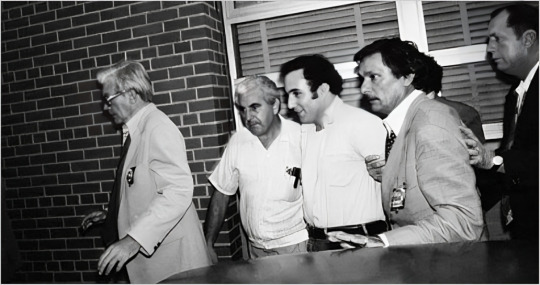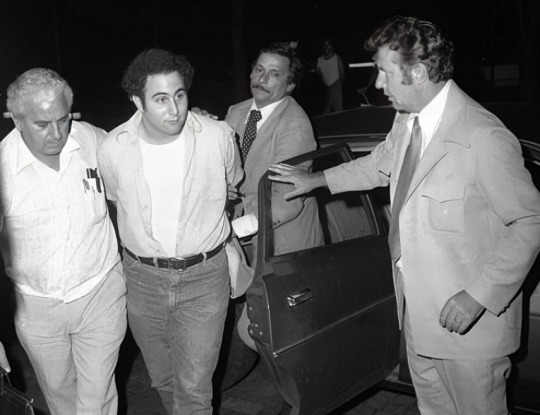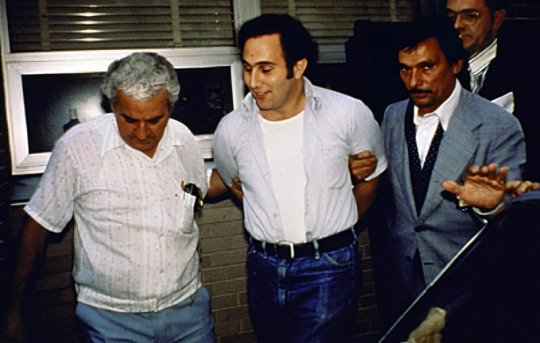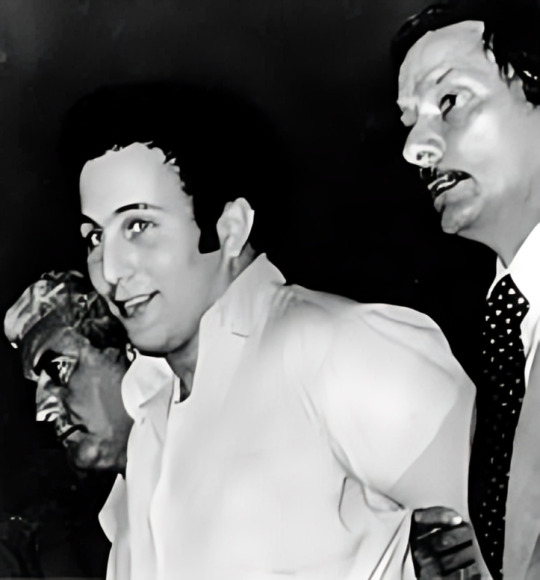#david berkowitz
Explore tagged Tumblr posts
Text
Now I have some pics emmmm....




30 notes
·
View notes
Text

david berkowitz by court artist marilyn church, 1977.
29 notes
·
View notes
Text

A policeman stands guard outside the apartment of David Berkowitz in Yonkers, August 11, 1977. Photo: Bettmann Archives/Getty/Bettmann Archive
27 notes
·
View notes
Text

Yes ma’am I am son of sam
3 notes
·
View notes
Text
Longlegs is like someone drunkenly described Silence of the Lambs to David Lynch.
If Nic Cage had given a subdued psychopath performance I think it could have elevated it massively. Unfortunately what we got was an indie film Joker with prosthetic makeup that made him look like the Temu version of David Berkowitz from Criminal Mimes.
#lol#Longlegs#silence of the lambs#se7en#seven#seven 1995#david lynch#nic cage#nicolas cage#temu#shein#joker#david berkowitz#criminal minds#not mine#Reddit#slasher#horror#horror movies#indie film#osgood perkins#reddit comments#criminal mimes
12 notes
·
View notes
Text

IM NOT OVER THIS !!!
He went to prison when he was in his 20s and now he is in 70s << the magnitude of this is unimaginable
as if he was born just to spend most of his life in prison !!!
#davidberkowitz #SonOfSam
7 notes
·
View notes
Text
eventually i crossed that invisible line of no return, after years of mental torment, behavioral problems, deep inner struggles and my own rebellious ways, i became the criminal that at the time, it seemed as if it was my destiny to become.
1 note
·
View note
Text
Son of Sam
#son of sam#son of satan#occult#video editing#david berkowitz#unalive#demon slayer#chapter 44#lord infamous
13 notes
·
View notes
Text
This is the very same great grandfather who lived about a five minute walk away from a very active serial killer, David Berkowitz, the Son of Sam. Also not too far from Untermyer Park and Gardens, where the Son of Sam cult would meet.
This man clearly had a Very Interesting life
No because why did my senile second gen immigrant Italian Catholic great grandfather tell my great aunt that he was gonna send the Bowery Boys to kill this guy who beat him over the hands with his cane at the retirement home-
4 notes
·
View notes
Text

His parole hearings will be held in this mooooonth
2 notes
·
View notes
Video
youtube
David Berkowitz Son of Sam
#youtube#David Berkowitz shorts davidberkowitz sonofsam serialkiler murderer victims murder youtube youtubeshorts youtuber tiktok instagram viralvide
0 notes
Text
Writing Notes: Serial Killer

Serial Killer - a person who methodically murders a substantial number of people over a period of time.
The definition of serial murder varies.
The lowest number of victims is 3 in most cases, although certain investigative agencies move the barometer higher or lower.
Signs of a Serial Killer
Serial killers often share some common traits. Here are just a few to consider:
Childhood troubles: Some of the most prolific serial killers have long histories of brutal child abuse in their pasts. For example, Ottis Toole—convicted of six counts of murder—grew up a victim of incest and violence at the hands of relatives. This is a common element in the backstories of several serial killers. Persistent bedwetting, fire starting, and cruelty to animals during youth can also be harbingers of future serial killing.
Lack of empathy: Serial killers almost always have a total lack of empathy, remorse, or guilt. They see themselves as entitled to torturing and killing their victims, often dehumanizing them in their eventual confessions to law enforcement.
Manipulative personalities: Some serial killers are quite charismatic and manipulative. Ted Bundy wrapped the media around his finger during his trial. H.H. Holmes made a name for himself as a prolific swindler and con man alongside killing dozens of people. Harold Shipman was a well-respected doctor and pillar of his community who killed well over two hundred patients.
Methodical killing style: Most serial killers murder their victims in a methodical, pattern-based fashion. For instance, Moses Sithole of South Africa chose women victims in their twenties who were unemployed. After offering them jobs, he would lead them to one of the remote areas where he committed his crimes.
Motives of Serial Killers
While each serial killer might murder for different reasons, certain motives crop up time and time again. Consider the following:
Hunger for power: Serial killers often murder because of a desire for power. They seek to dominate their victims, not just kill them. Some theorize the worst mass murderers of history (e.g., Adolf Hitler, Joseph Stalin, Mao Zedong, etc.) might have become serial killers if their ascension to power didn’t enable them to enact their violent crime fantasies on a wider scale.
Notoriety: Both serial murderers and spree killers (like mass shooters) often kill in the interest of attention. The Son of Sam killer (David Berkowitz) sent letters taunting New York police. The Zodiac Killer (still unknown) sent cryptic messages about his killings to Bay Area newspapers and law enforcement agencies. Albert DeSalvo, the alleged Boston Strangler, may have turned himself in for even more murders than he actually committed in the interest of greater notoriety.
Psychosis: Many—some would argue all—serial killers are verifiable and literal psychopaths. For instance, murderers like Ed Kemper and Jeffrey Dahmer had troubled histories before they even began killing their victims.
Revenge: Some serial murderers use their killings as an opportunity to seek revenge against the people who wronged them. For instance, a “black widow” (e.g., female serial killer), such as Aileen Wuornos, might murder innocent men or the wrongdoers themselves to feel like they are exacting revenge upon men who brutally mistreated them.
Sadistic pleasure: Serial killers might gain a deranged sense of delight in torturing and murdering their victims. For instance, both Ted Bundy and Gary Ridgway (the Green River Killer) preyed on young women to act out their sadistic sexual fantasies before killing them.
Some Notorious Serial Killers
These are just a few of the worst serial killers in history:
Aileen Wuornos: Although Wuornos argued her killings were in self-defense, juries convicted her of 6 counts of first-degree murder for crimes that occurred between November 1989 and November 1990 in Florida. The state executed her in 2002.
Albert DeSalvo: Despite the fact DeSalvo confessed to being the Boston Strangler, people dispute the credibility of his claims. Authorities associate thirteen female victims with the Boston Strangler. In 2013, experts confirmed DNA evidence linked DeSalvo to the sexual assault and murder of one of those victims.
David Berkowitz: The media called Berkowitz the Son of Sam after he used the phrase in a letter he mailed to New York police before they identified him. He was sentenced to serve 6 life sentences for murdering 6 young women and attempting to kill others.
Ed Kemper: Nicknamed the “Co-ed Killer,” Kemper murdered 10 people, most of them female college students he picked up while they were hitchhiking.
Gary Ridgway: Also known as the Green River Killer, Ridgway killed more than four dozen people, the bodies of whom he tended to deposit in the woods around the Green River in Washington.
Harold Shipman: An English doctor, Shipman killed his female victims by way of lethal injections. A jury convicted him of fifteen murders, although there is evidence he was responsible for the deaths of up to 250 people.
Henri Landru: Nicknamed the “Bluebeard of Gambais,” Landru was a Frenchman who killed at least eleven people between 1914 and 1919. After the jury found him guilty and sentenced him to death, he died by guillotine.
H.H. Holmes: Although convicted of just one murder, Holmes confessed to more than two dozen. Prior to his imprisonment, he was a con artist, responsible for check forgeries, insurance fraud, and other crimes. The state of Pennsylvania hanged him for the killing of Benjamin Pitezel, Holmes’s former business partner.
Jack the Ripper: Authorities associate this unknown person (or persons) with multiple murders in Victorian England. The victims were all women, and all died from violent stabbings.
Jeffrey Dahmer: This US American serial killer, also known as the Milwaukee Cannibal, stalked the Midwest for victims. He preserved and even ate the body parts of those he killed before being apprehended by the police.
John Wayne Gacy: Also known as the Killer Clown, Gacy—a party clown performer— almost exclusively preyed on young men. When law enforcement brought him to justice, the remains they found buried in his house made for one of the most notorious and grisly crime scenes in history.
Ottis Toole: Juries convicted Toole of 6 counts of murder plus arson. He died while in prison in Florida.
Richard Ramirez: This Los Angeles serial murderer attacked almost 20 people and killed at least 13. The media referred to him as the “Night Stalker” before criminologists were able to track down and identify him.
Ted Bundy: Responsible for crimes in Washington, Oregon, Idaho, Utah, and Colorado, Bundy had at least two dozen victims but possibly as many as a hundred. He was responsible for abducting, sexually assaulting, and killing young women across the five states.
Zodiac Killer: Responsible for one of the most notorious killing sprees in US American history, the still unidentified Zodiac Killer was active in and around San Francisco in the late 1960s. The media referred to the unknown male by the name “Zodiac Killer” after he used the term Zodiac in his cryptic messages to Bay Area newspapers and law enforcement agencies.
The Investigation of a Serial Killer
To investigate a serial killer, various levels of law enforcement will work together.
If a local pattern emerges, the relevant police department might coordinate with the Federal Bureau of Investigation (FBI).
If a more disparate geographical pattern of killings crops up, investigators might begin to reach out to other areas about cold cases of a similar ilk.
Investigative task forces might work for years or even decades to identify a serial killer.
They seek to connect separate events over a sustained period of time, as well as to build a psychological profile of the killer.
This helps narrow down the search for the perpetrator.
They then tie together clues left behind to capture the murderer.
Sometimes they’re successful—other times, cases stay cold and mysteries remain unsolved.
History of Serial Killings
When most people refer to the crime sprees of serial killers, they’re thinking of a particularly notorious set of murderers from recent history.
Serial killers have existed throughout all of history, however, in one iteration or another and are not unique to a particular country.
Jack the Ripper, an unknown person (or persons) authorities associate with a series of slayings in Victorian England, is practically synonymous with the term “serial killer.”
Henri Landru (the Bluebeard of Gambais) was a French killer from around the same era.
Source ⚜ More: Notes & References ⚜ Writing Resources PDFs
#writing notes#crime#writing reference#writeblr#character development#literature#dark academia#writers on tumblr#spilled ink#writing prompt#creative writing#light academia#writing ideas#writing inspiration#writing resources
78 notes
·
View notes
Text
Next in my unending series on freaky customers who you can't quite accuse of a crime but you probably should, is someone I have to call Psycho Dog Treat Guy. PDTG is a tall, athletic, handsome guy who always seems to me to be coked to the gills, and so does his dog. He comes in and, with a great sense of urgency, orders coffee, overnight oats, and dog treats. We used to sell these fancy house-made dog treats formally but I guess we stopped doing so sometime before I got hired -- so I always have to have this weird exchange with him where I say "Well, we have a few loose ones and I see something in the register for $4, do you remember how many you used to get?" and he says "NO! I HAVE NO IDEA! THEY USED TO BE $9!" and I say "So how many did you get for $9?" and he says "I DON'T KNOW! YOU CAN'T JUST SELL ME A PACK OF THEM? WHERE ARE THEY??" and I say "We really don't have them like that, do you just want a couple for now?" and he stares me in my eye and says, "LISTEN. YOU DON'T UNDERSTAND. MY DOG STOPS RIGHT IN FRONT OF THIS PLACE EVERY DAY, BECAUSE HE KNOWS THE DOG TREATS ARE IN HERE." And then I always want to say, "Sir, is your dog abusing you? Is your name David Berkowitz? Blink twice if you want me to call the ASPCA!"
21 notes
·
View notes
Text
As a fan of true crime videos, something that really bothers me about Alastor is that he looks NOTHING like a real serial killer despite being canonically one.
It doesn't bother me that there are Aroace characters who are bad people, there are all kinds of bad people, but it bothers me in the case of Alastor because Vivziepop made him that way just because he is narcissistic, as if all Aroace people were like that because of narcissism💀
and something that Vivziepop did not take (or want to take) into account is that the VAST MAJORITY of serial killers are STRAIGHT MEN, I'm not saying that,the facts say it: Ted Bundy, Paul Bernardo, Charles Manson, david berkowitz , Jack the Ripper, the strangler, the dating show killer (I forgot the names of these two but you get my point) and more.
I know there are exceptions (Jeffrey Dahmer and John Gacey) but in most cases serial killers are men who have preferences in victims based on their sexual desire and personal tastes (literally there was a generation of women who dyed their hair to escape by Ted Bundy).
We are supposed to believe that he is only a narcissist, but in that case why would he have friends, why would he have a moral compass that he rigorously follows? The narcissistic side doesn't come in if he has such genuine friendships with Rosie and Mimzy, it's an incongruity the size of a house.
Even if there are abusers who may have close ties these are not genuine or have ulterior motives, but this is not the case with Alastor and makes it a huge nonsense.
Besides, what was there about their murders? What were their victims like? What drove him to kill? Would this have anything to do with his mother?
I like the theories that are related to Alastor's mother since it gives us a glimpse of a possible more human side than what the series can show, I especially like the theory of Alastor with an abusive father because 1) it goes with the profile of murderers who had unstable family lives and 2) it would explain why most of his friends are women, since they must remind him of his mother (the person he loves the most) and that is why he is naturally kind to them.
Connected to the abusive father theory, it would be interesting if Alastor's victims had in common being wife beaters, with his father being his first victim (either getting tired of him or getting revenge on him for killing his mother) and getting rid of his body by eating it. .
But sadly vivziepop only make him a edgelord that wants attention 24/7 , what a shame

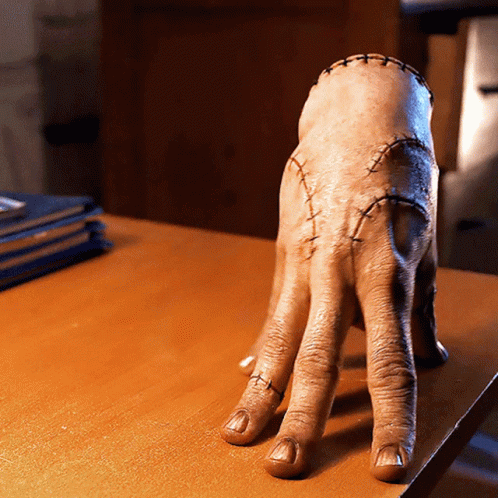
138 notes
·
View notes
Text
Serial killers homes


Jeffery Dahmer lived in Apartment 213, 924 North 25th Street, Milwaukee, USA. The apartment was destroyed 15 months after his arrest.


John Wayne Gacy lived at 8213 West Summerdale Avenue, Norwood Park, Chicago, USA. The house was torn down in 1979 but was rebuilt.


Dennis Raders (BTK killers) home which was located in Park City, Kansas. The house was bulldozed in 2006.


David Berkowitzs (son of Sam’s ) apartment building at 35 Pine Street, Yonkers


Ed Geins home was located in Plainfield, Wisconsin. A fire destroyed the house in 1958 10 days before it was scheduled to be auctioned.
20 notes
·
View notes
